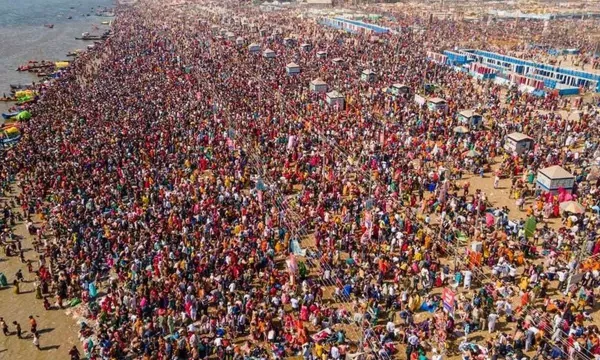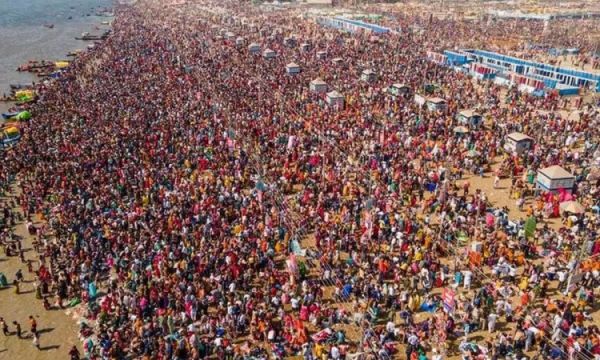
Can Kumbh Nagar be used as a template for policing, disaster relief, and urban development? According to Uttar Pradesh Urban Development and Energy Minister A K Sharma, Mahakumbh is a demonstration of contemporary India’s potential rather than just a custom. Sharma claims that the goal of this year’s Mahakumbh is to showcase India’s organizational prowess on a worldwide level, and it seems to be accomplishing this goal.

The arrangements have received accolades from tourists from all around the globe. The fact that there are more people living in the Mahakumbh region than in the US shocked an NRI from the USA. While groups from Bangalore, Chennai, Ahmedabad, Mumbai, and Kolkata admitted that the event’s amenities are superior to those in major cities, another Ugandan visitor praised the excellent facilities. The infrastructure’s organization and cleanliness were especially praised by foreign tourists. Sharma emphasized how well these arrangements were planned. The 4,000-hectare region has seen the rapid installation of more than 1,200 kilometers of drinking water pipes.
Tents, offices, stores, and organizations are served by almost 70,000 tap connections, and 250 water ATMs provide clean water 24/7.
More than 20,000 people daily maintain the 150,000 toilets that have been constructed to guarantee cleanliness. The event’s flawless hygienic standards are a result of thousands of machines and supervisors. In addition, 125,000 tents—supported by more than 5,000 electrical connections and 75,000 LED streetlights—house government agencies, religious organizations, and tourists.
Thirty pontoon bridges that let bathers cross rivers and hundreds of kilometers of makeshift roadways have improved transportation in the Mela region. A contemporary riverside with all the facilities and new bathing ghats has been constructed. Religiously significant mythological locations, such as Akshay Vat, Lete Hanuman Ji Temple, and Bharadwaj Ashram, have been renovated with top-notch amenities.
Modern technology is essential to event management. 52,000 geotagged power poles, 2,700 cameras, and several command and control centers are all part of AI-driven monitoring.
Face recognition technology is used in security and firefighting, and automated garbage disposal, water spraying, and road cleaning maintain the environment. The efficiency of the event is further increased by the deployment of state-of-the-art technology for bridge lighting and river cleaning.
India’s capacity to carry out extensive urban planning and catastrophe management is shown by Kumbh Nagar. The Maha Kumbh has raised the bar for international event planning by fusing cutting-edge technology with painstaking execution, thus solidifying India’s position as a pioneer in infrastructure development.